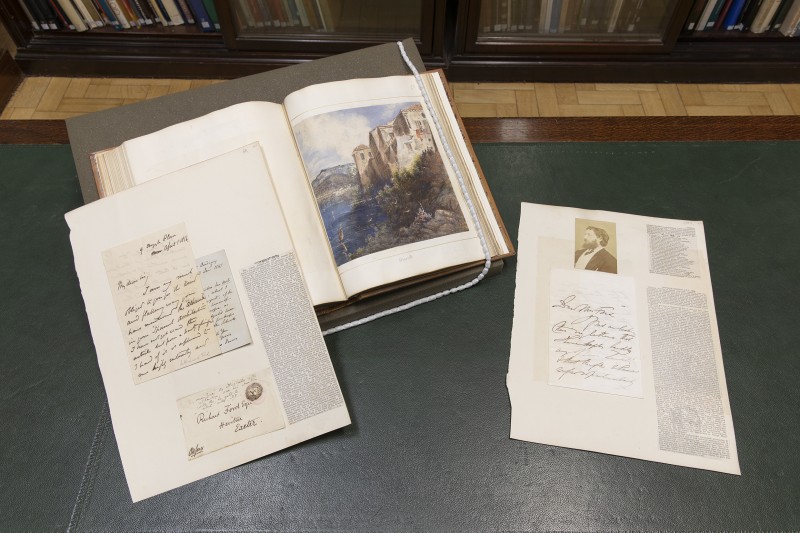With the generous assistance of FNL, the National Gallery Research Centre has been able to acquire a significant collection of papers and books relating to Richard Ford’s interests in Spain and Spanish art.
Richard Ford (1796-1858) was an English writer, collector and amateur artist. In 1830 he visited Spain and over the next three years in the country he made over 500 drawings, one of the most complete pictorial records of Spanish cities and their monuments before the advent of photography. From 1836 Ford contributed a number of lengthy reviews to the Quarterly Review, several of them on Spanish subjects. This led the publisher John Murray to invite Ford to write the Hand-book for Travellers in Spain (including an account of the pictures in the Prado that runs to over 17,000 words). When the book finally appeared in 1845, it was an immediate success and was followed a year later by Ford’s Gatherings from Spain.
The collection of papers and books was assembled by a recognised Ford scholar who has published on this subject. It divides into four principal areas:
- Over 45 rare books on travel in Spain, either by Ford or from his library collection dating from the early 16th to the 19th centuries.
- More than 200 collected letters to/from Ford and notable artistic and literary figures, e.g. Dominic Colnaghi, Anthony Panizzi, Charles Eastlake, Edward Lear, George Borrow, Thomas Lawrence, Anna Jameson, John Murray, John Everett Millais, etc.
- 20th/21st century research papers and correspondence with scholars, e.g. with Richard Ford’s descendant, the art historian Brinsley Ford.
- A sketchbook of watercolour views by Richard Ford and a number of etchings and drawings.
The acquisition of this collection of library and archive material helps support research on the Gallery’s collection and will raise awareness of the historic interest in Spanish art. One painting formerly owned by Richard Ford is now in the collection: Francisco Ribalta, The Vision of Father Simón (NG2930). The acquisition has significantly contributed to the Library’s collection of early travel books by strengthening the representation of Spain in this area. While the Library already has a notable collection of rare and early travel books on Italy and the Low Countries, holdings on Spain were much more limited. The Ford-related archives will prove significant for the Gallery’s work on the history of buying, collecting and display, particularly in the field of collecting Spanish art in the 19th century. Along with William Stirling-Maxwell, Richard Ford was a major figure in this field and the acquisition of this collection can be used to underpin future doctoral research projects and potential collaborations with higher education institutions.
Founded by Parliament in 1824, the National Gallery is one of the finest art galleries in the world, housing the nation’s collection of historic European paintings, and it is also a pre-eminent centre for the research of paintings in the Western European tradition from the 13th to the early 20th century. Established in 2013, the National Gallery Research Centre, of which the Library and Archive form a part, supports the Gallery’s research strategy and ensures that our resources are made available to as wide an audience as possible. The papers and books are in the process of being catalogued: the archive (ref. NGA48) has been made available to the public via the library catalogue.

